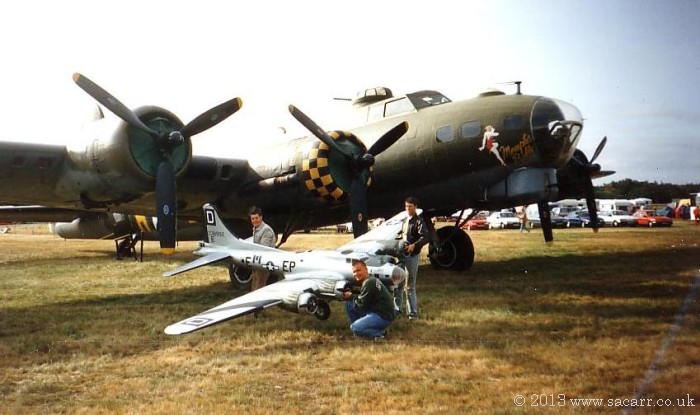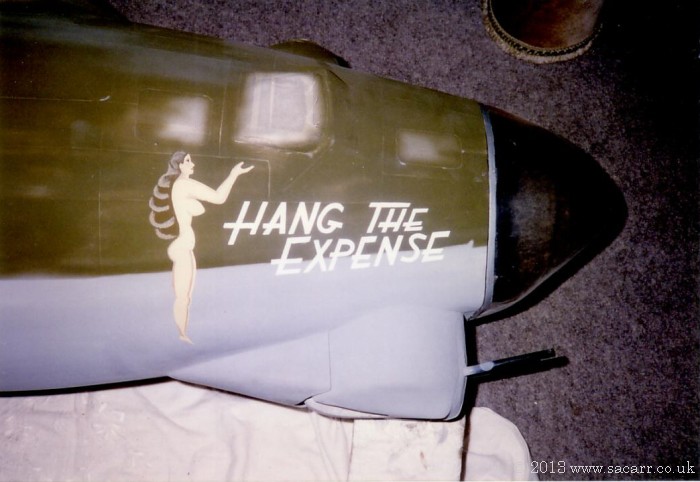| Elvington
Airshow - August 26~28th 1995 |
|
|
|
The
test flight took place at the end of a very nice warm summer. Two days
after the test flight was the Elvington Show, and in those two days, the
weather turned from warm and sunny to wet and windy. It wasn't ideal
conditions for a show, never mind with a new model.
Because of the weather, I only made one flight with the B-17 during the show. The few flying shots of the B-17 were poor quality screen captures from a video taken of the flight. At this point, the USAAF Model Team could now muster three P-47's, the UC-64 Norseman and the B-17. The Team's P-51 was temporarily grounded as it had been using one of the B-17 engines. Over the next couple of years, it would fly with a Quadra 42 and Zenoah 38. |
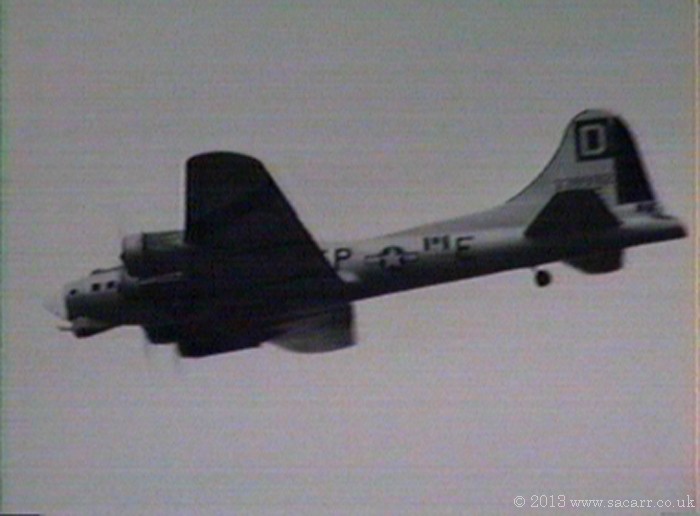
|
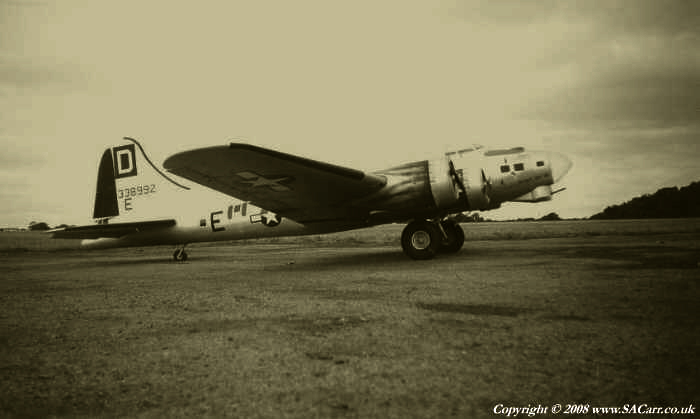
The B-17 parked up on the dispersal to the side of the Elvington main runway. |
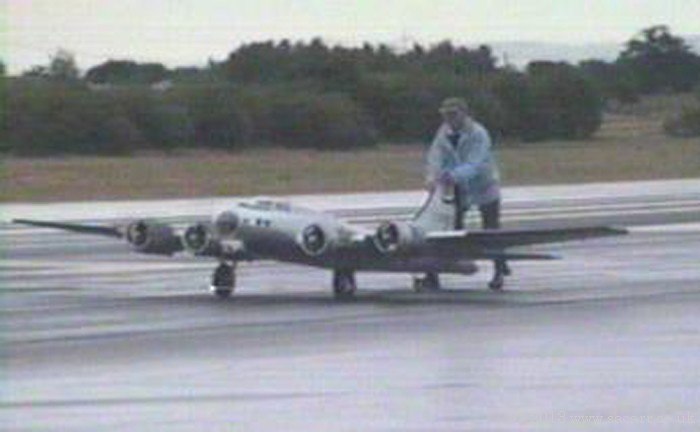
|
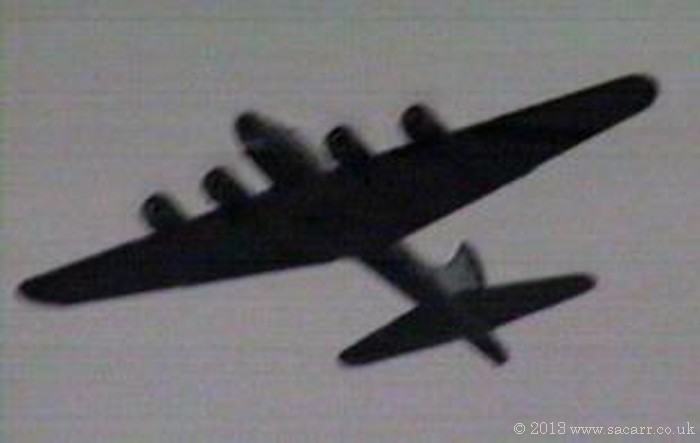 |
| The
USAAF Team aircraft and fullsize B-17 "Sally B" taxiing behind
the model. Just on the right edge of the picture is the nose of a C-47
with the codes D8 on the side. This aircraft would also become a USAAF
Team aircraft about seven years later. |
|
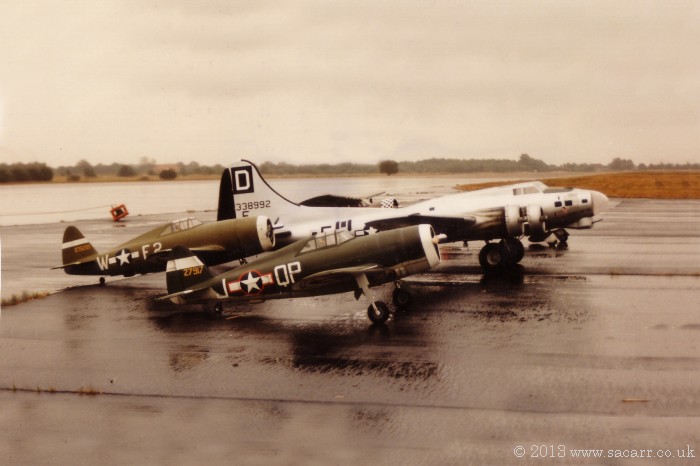
|
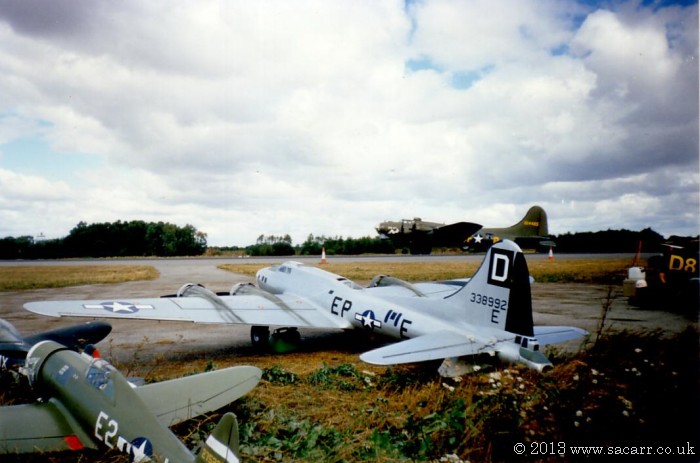 |
| Detailing
and Respray - Winter '95/Spring '96
After the Elvington show, it was time to finish and detail the model. This involved rubbing back all the silver paint, adding glazed windows where they had been painted, adding turrets, detail in the nose compartment and panel lines built up from filler. |
|
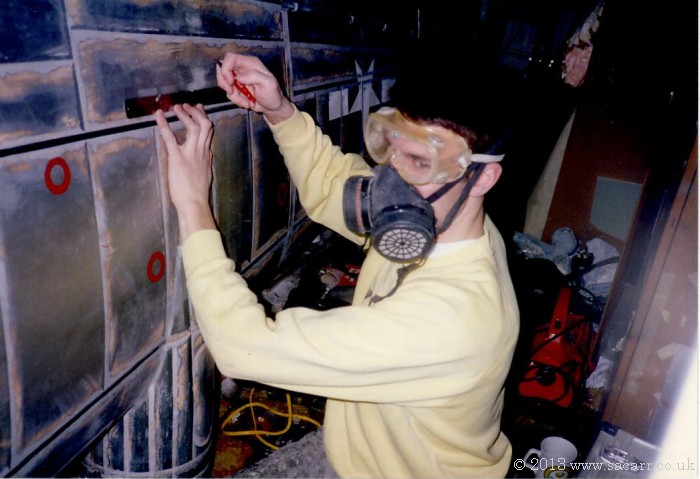
|
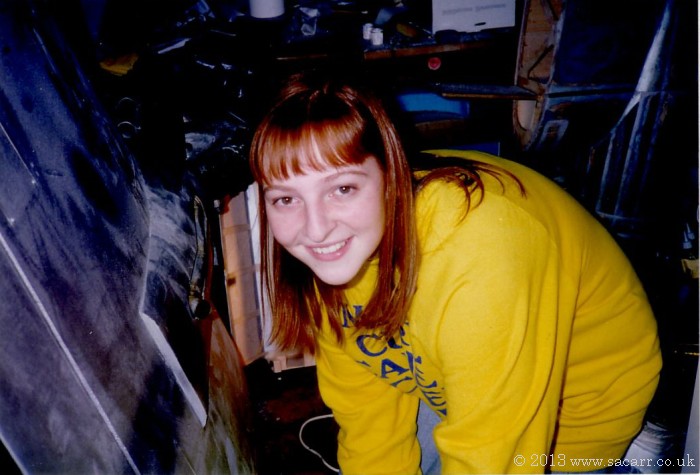 |
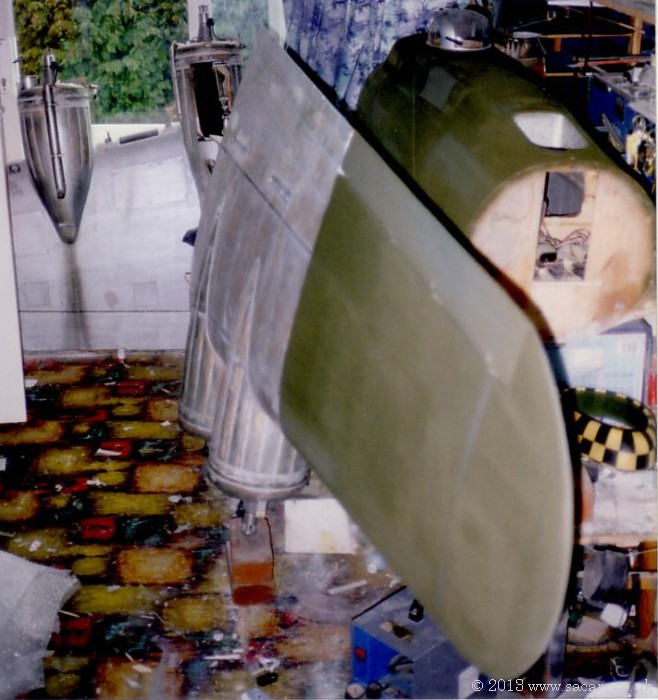
|
Slowly,
section by section, they changed from silver to olive drab. The nose art
was copied from an original photo, and the cheek window cacuum formed over
a plug made from P38 polyester filler. Like a number of early B-17G's,
#035 was only fitted with the starboard side cheek gun, presumably due to
a lack of left side units at the theatre modification centres.
The small wiggle in the olive drab/grey line just ahead of the aircraft name was also copied from the original photo.
|
| Fully
painted and in the garden for the first time in the new scheme for engine
runs. The picture to the left shows an unusual effect with the props,
showing both a prop tip arc and a stationary blade. This was as a result
of a slow exposure catching the tip arc while the flash froze the blade in
a stationary position. At this point, the B-17 was still waiting for the
ball turret to be made and the scale wheel hub covers adding. |
|
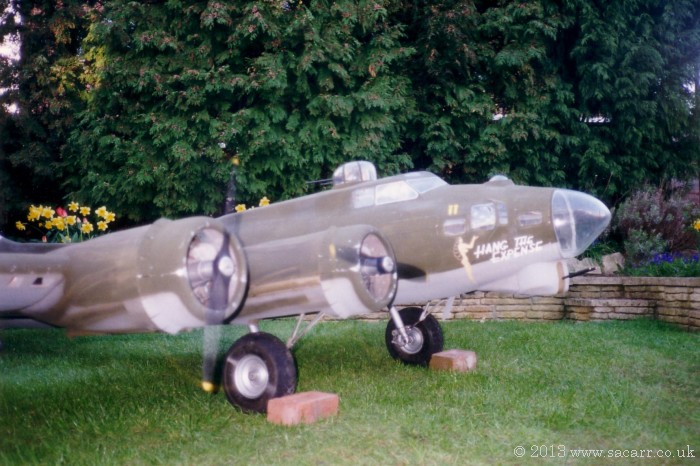
|
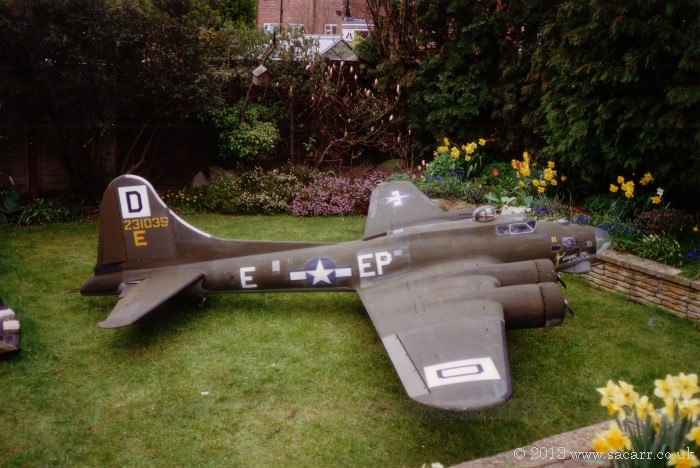 |
